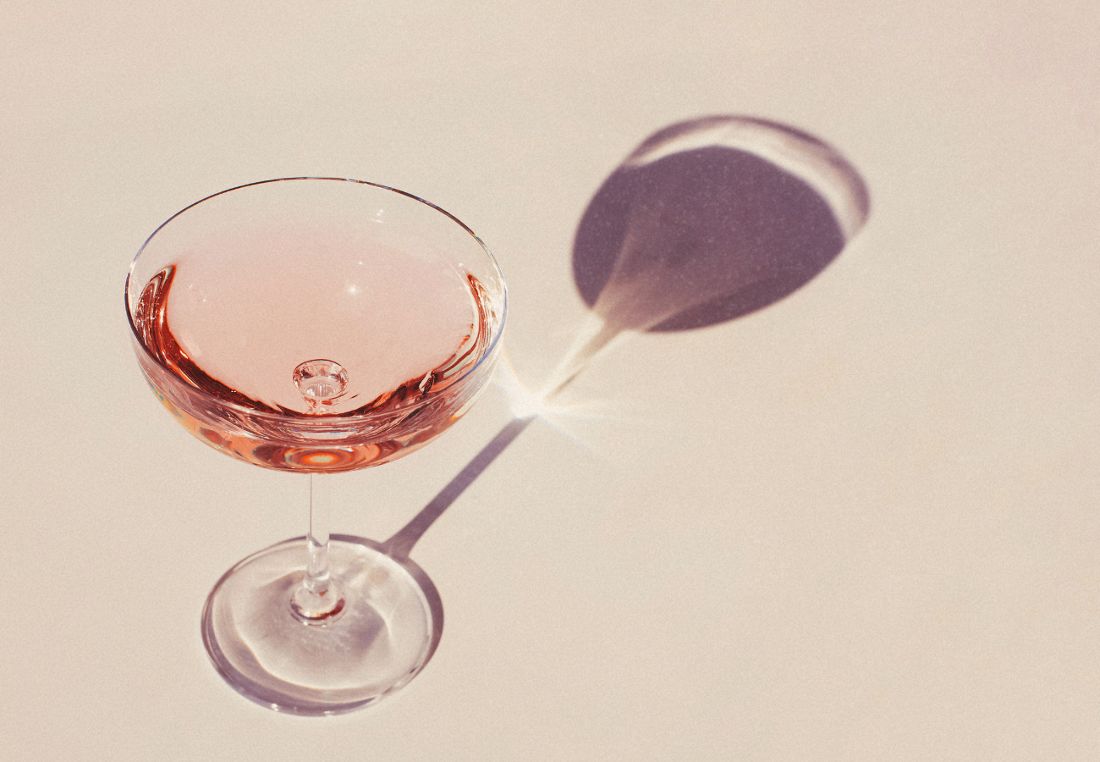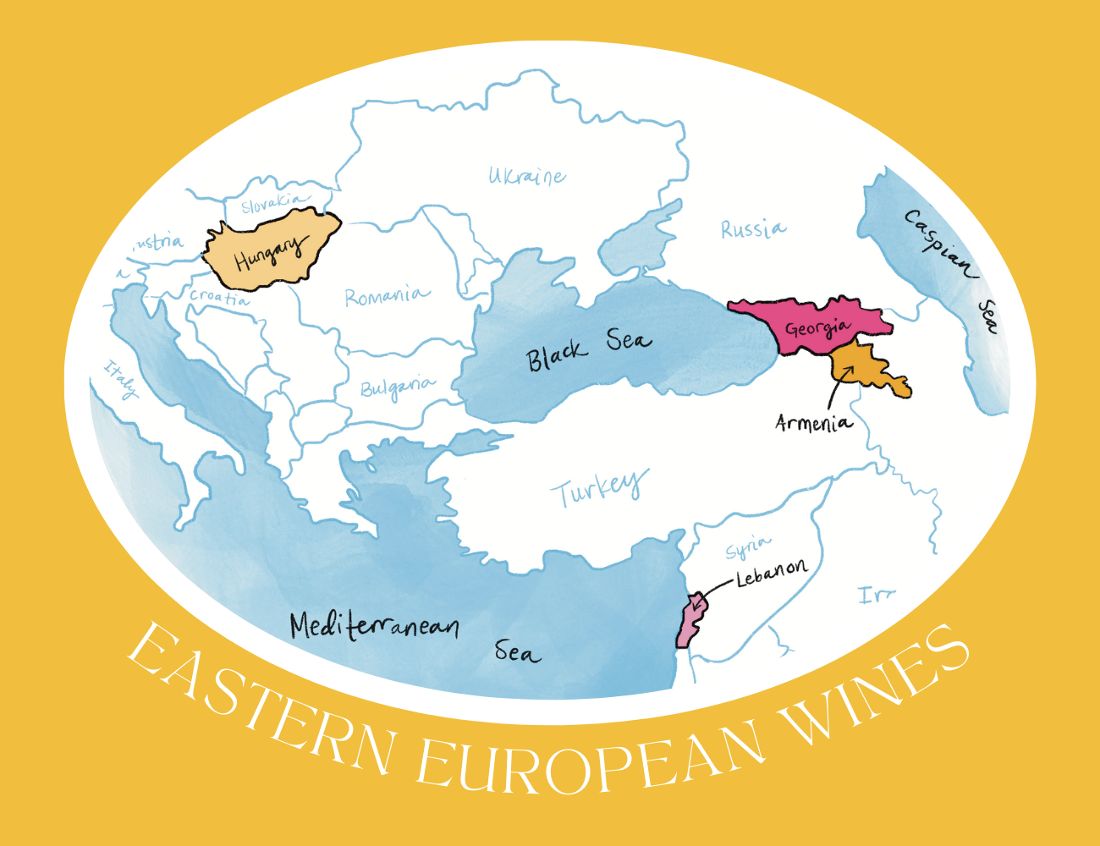This is part of an ongoing series called Become A Better Taster! Each post will illustrate the essential aromas and tasting notes associated with a specific grape varietal. Use this post as a baseline when tasting your next Sauv Blanc!
What do you smell and taste when you splash a Sauvignon Blanc into your wine glass? Not totally sure?
Below is a handy visual guide to the classic aromas and tasting notes you might find in any Sauvignon Blanc. There will be differences and nuances in texture and flavor depending on the origin of the wine, how it was grown, the year of the wine, how it was finished in its winemaking process and more (more on that below).
Here are a few more basics to help you find your footing when exploring a new-to-you Sauvignon Blanc. Clink, clink!
SOME NUANCES YOU MIGHT TASTE
• Old World expressions of Sauvignon Blanc (those produced in Europe, including England) tend toward tart + lively notes -- like lemon, lime, flint, sometimes smoke, gravel, as well as...
*This is our guide on how to choose wine for your wedding day! Our sommelier, Leslee, gives her tried-and-true tips for picking wine for your perfect celebration. Plus, our PR maven, Addy, shares her testimonial of working with Leslee for her own wedding last fall. Enjoy!*
Hello Wedding Lovers,
It's Leslee here! I'm hoping to help put the ease in planning for your big day's festivities - party planning festivities, that is.
I have helped brides-to-be for over 20 years with their wedding wine lists. The first question I get is: Do I have to select the wines our wedding venue is forcing us into from their own list? My reply is: definitely not!
Before you make any decisions, check with your venue on a corkage fee.
I'm going to give you some math on this in just a minute, but first, hear me out...
At Sip Better, you always win with amazing wines that not only taste great and are healthy for you + your guests, but live at a price point that everyone can afford—yes, even...
Are you excited about wine but also...confused by it? Makes sense! There are many myths about wine floating around and a genuine dearth of accessible information on whether they are true or not. Often, the answers are complicated. Allow us to shed a bit of light on four of the biggest wine myths out there.
MYTH: SUGAR IN WINE IS BAD
Sugar: is it bad, is it good, is it totally misunderstood? YES. The truth about sugar is that it is a crucial component in the winemaking process. Natural sugar, that is. When yeasts munch on naturally occurring sugars (found in wine grapes and all other fruits), they produce alcohol and myriad complex flavors that wine drinkers love.
But things get sticky (ha!) when wine producers ADD cane sugars and concentrates to that naturally sweet grape juice. Many big producers—such as brands that rhyme with 'shapothic' and even a certain celebrity’s ‘clean’ wine brand— can add cane sugar and other junk to wine to create a richer, more voluptuous mouthfeel that...
This is part of an ongoing series called Become A Better Taster! Each post will illustrate the essential aromas and tasting notes associated with a specific grape varietal. Use this post as a baseline when tasting your next Cabernet!
What do you smell and taste when you're swirling a dark red Cabernet Sauvignon in your glass? Not sure?
Below is a handy visual guide to the classic aromas and tasting notes you might find in any Cabernet Sauvignon. There will be differences and nuances in texture and flavor depending on the origin of the wine, how it was grown, fermented, and stored (more on that below). Did you know, by the way, that Cabernet Saugivnon is a product of crossing two popular grapes: Cabernet Franc + Sauvignon Blanc? Cabernet Sauvignon carries a touch of both grapes aromatically and on the palate - due to its parentage.
Here are a few more basics to help you find your footing when exploring a new-to-you Cabernet. Clink, clink!
SOME NUANCES YOU MIGHT TASTE
• Old World...
Eastern European wines are more widely enjoyed than ever these days! But with this infusion of amazing indigenous grape varietals comes a certain amount of confusion. What the heck does furmint taste like? If I'm a Pinot Noir lover, which Armenian grape will I like best? Great questions! Consider this post your entry point into lesser-known wines from Eastern Europe.
Enjoy the journey!
HUNGARY
Winemaking has been a part of Hungary's history dating back to the Romans. The country boasts 22 different wine regions and is most famous for the Tokaj region's aszú—a sweet and golden-hued wine made from the furmint grape—which was hugely popular among European royalty for centuries. Seasons of war, plague, and Communist rule have sent Hungary's wine industry on a rollercoaster of changes, but today, many Hungarian winemakers are once again turning toward small, low-intervention, family-run operations that value quality over quantity.
Hungarian wines can seem a bit tricky to navigate because...




